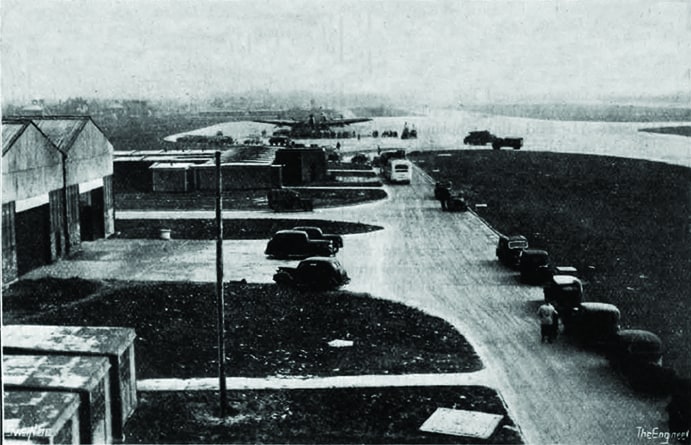
Heathrow was intended as a three-runway airport 72 years ago, and now those plans may finally reach fruition
Heathrow Airport had a record- breaking year in 2016 when it registered 257,922 passengers on July 31 and a total of 75.7 million airborne visitors by the end of the year.
The current site is home to two runways that handle an average 1,293 flights per day, although this will change if plans progress to build a third runway at Heathrow.
READ OUR ORIGINAL ARCHIVE COVERAGE OF HEATHROW HERE
What might come as a surprise is that 72 years ago the west London airport was originally intended as a three-runway facility and in January 1946 a correspondent from The Engineer was on hand to report on how the unfinished aerodrome was passed back into civilian hands following the end of the Second World War.
“The origin of Heathrow was the need of the Royal Air Force for an airfield near London capable of handling the heaviest types of aircraft, especially in the closing stages of the war in the Far East as it was expected to develop,” our reporter said. “In planning, it was taken into account that such an airfield could be subsequently developed for civil aviation.”
Placed 14 miles from central London, Heathrow was identified by The Engineer as being easily accessible by road and rail. “The question of a direct service of trains is being considered” the correspondent wrote, little knowing that three rail services – London Underground, Heathrow Connect and Heathrow Express – would go on to serve the airport in its current format.
Post-war Britain was, of course, still living with the economic after-effects of conflict. Air travel was the preserve of the wealthy, a situation that has gradually eroded to the point of exposing Heathrow’s ability to keep pace with capacity issues.
The Airports Commission concluded in July 2015 that an expanded Heathrow would help alleviate London’s airport capacity problem, a controversial decision that will displace a number of people living near the facility. Similar discussions were taking place in 1946, although the consequences did not seem so severe.
“The three-runway airport… will in itself give London a first-class airport, which will be capable of accommodating the largest aircraft now contemplated, but in due course it is planned to extend the area and increase the number of runways.
“A thorough study of the neighbourhood has been made in order to safeguard the land and avoid unnecessary interference with dwelling-houses and ancient buildings.
“It is not anticipated that the number of persons who will be displaced from their homes will be large, and there will be no displacement within the next five or six years, by which time it is expected that the housing position will be easier.”
Work on transforming Heathrow had begun in May 1944, with the main work focused initially on emptying ponds and disposing of a million gallons of water.
“Then followed the filling of the ponds and the making up of levels for the laying of the runway and track,” The Engineer said. ‘Concurrently, 13 miles of large concrete pipes were laid for disposing of collected rainwater. Four 54in diameter pipes run side by side to a gravel pit about a mile from the site, which serves as a balancing reservoir; two million tons of earth and gravel were excavated during the first summer and winter; some 12,000 yards of multiple ducting for electric cables were laid, and 60 miles of wire were drawn through the ducts. On the main runway the concrete is 12in thick. The laying of this mass concrete paving was started in 1945, and was completed in 3.5 months.
“Daily tests of quality and strength of the concrete showed, we are informed, an average strength of 30 per cent above the very high strength demanded by the specification.”
It is estimated that the next runway at the current Heathrow would deliver significant growth in local employment through additional direct, indirect and induced jobs totalling around 64,000-66,000 (for the Extended Northern Runway scheme) or 75,000-78,000 (North-west Runway scheme) in 2050.
By contrast, The Engineer observed there were no more than 700 “heavy labourers” employed at Heathrow in 1944, with the site averaging 400 such workers.
Explore the manifold riches of The Engineer’s voluminous archive




Red Bull makes hydrogen fuel cell play with AVL
Formula 1 is an anachronistic anomaly where its only cutting edge is in engine development. The rules prohibit any real innovation and there would be...